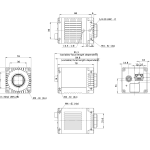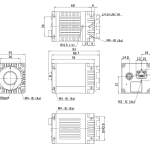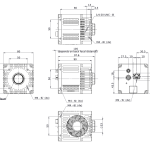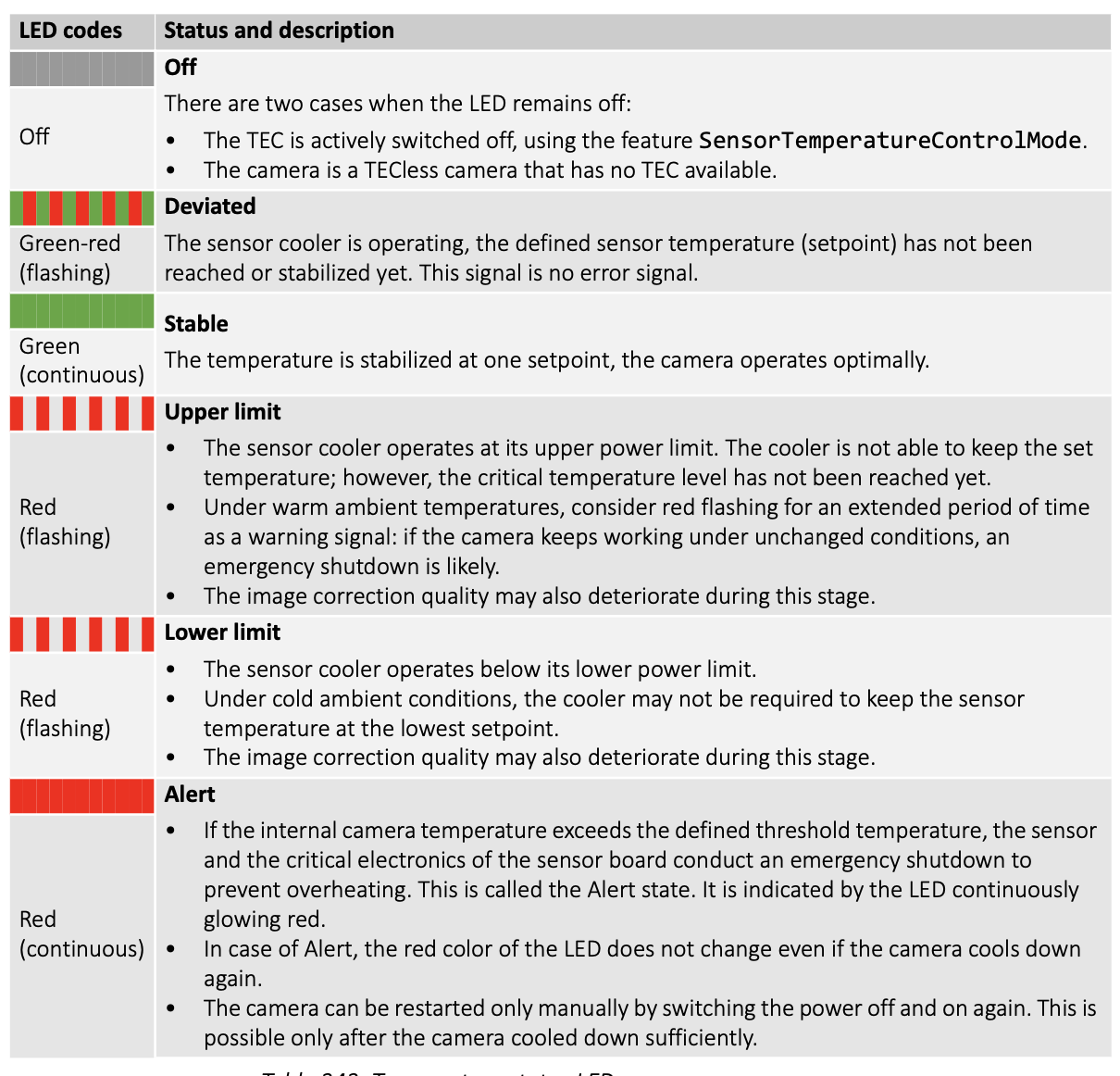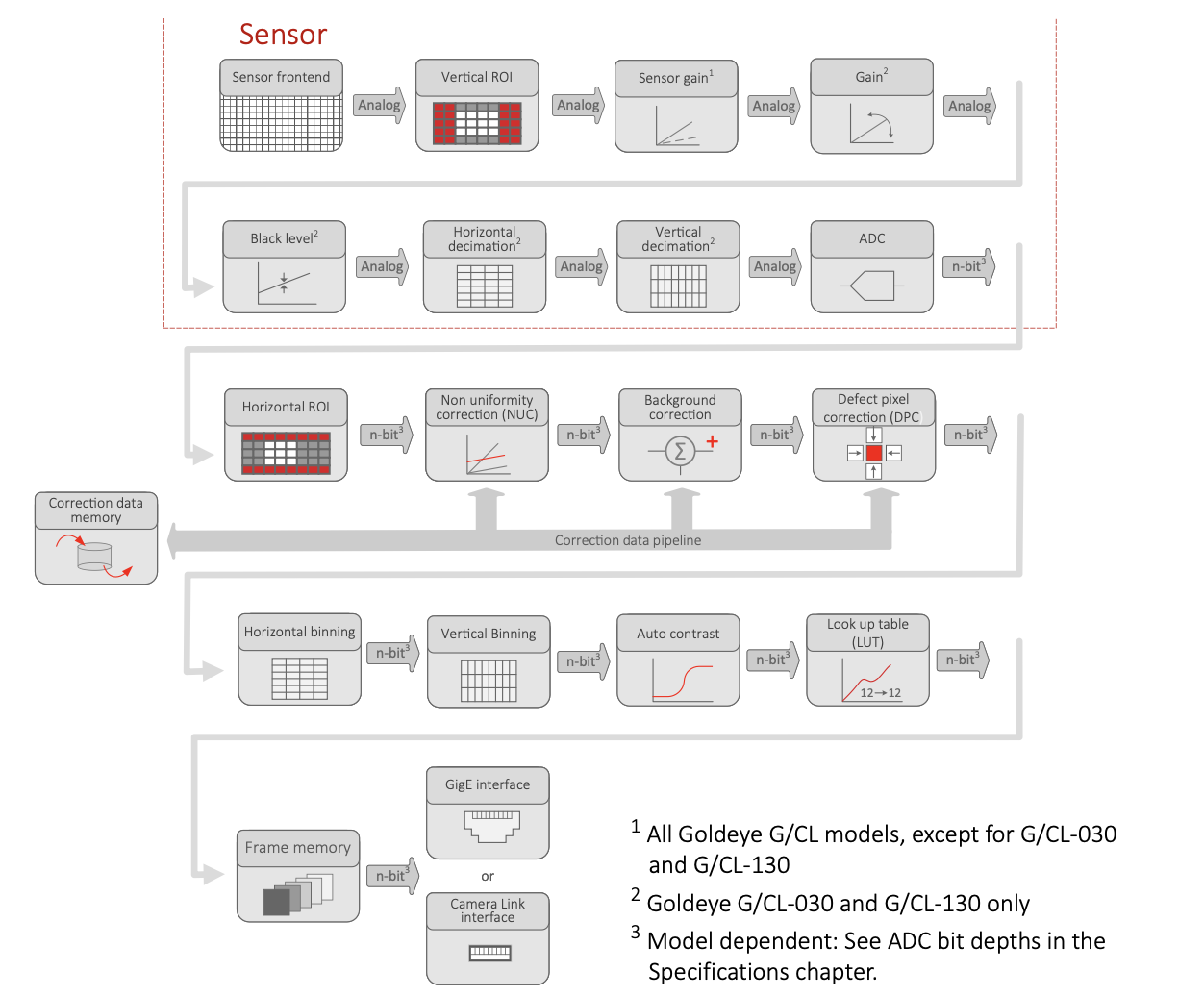Datasheets (GigE Ethernet)
VSWIR 400 – 1700 nm
SWIR 900 – 1700 nm
Goldeye G-034 SWIR TEC1
XSWIR 1100 – 1000 nm
XSWIR 1300 – 2200 nm
3D STEP Files
I/O Connectors pinout
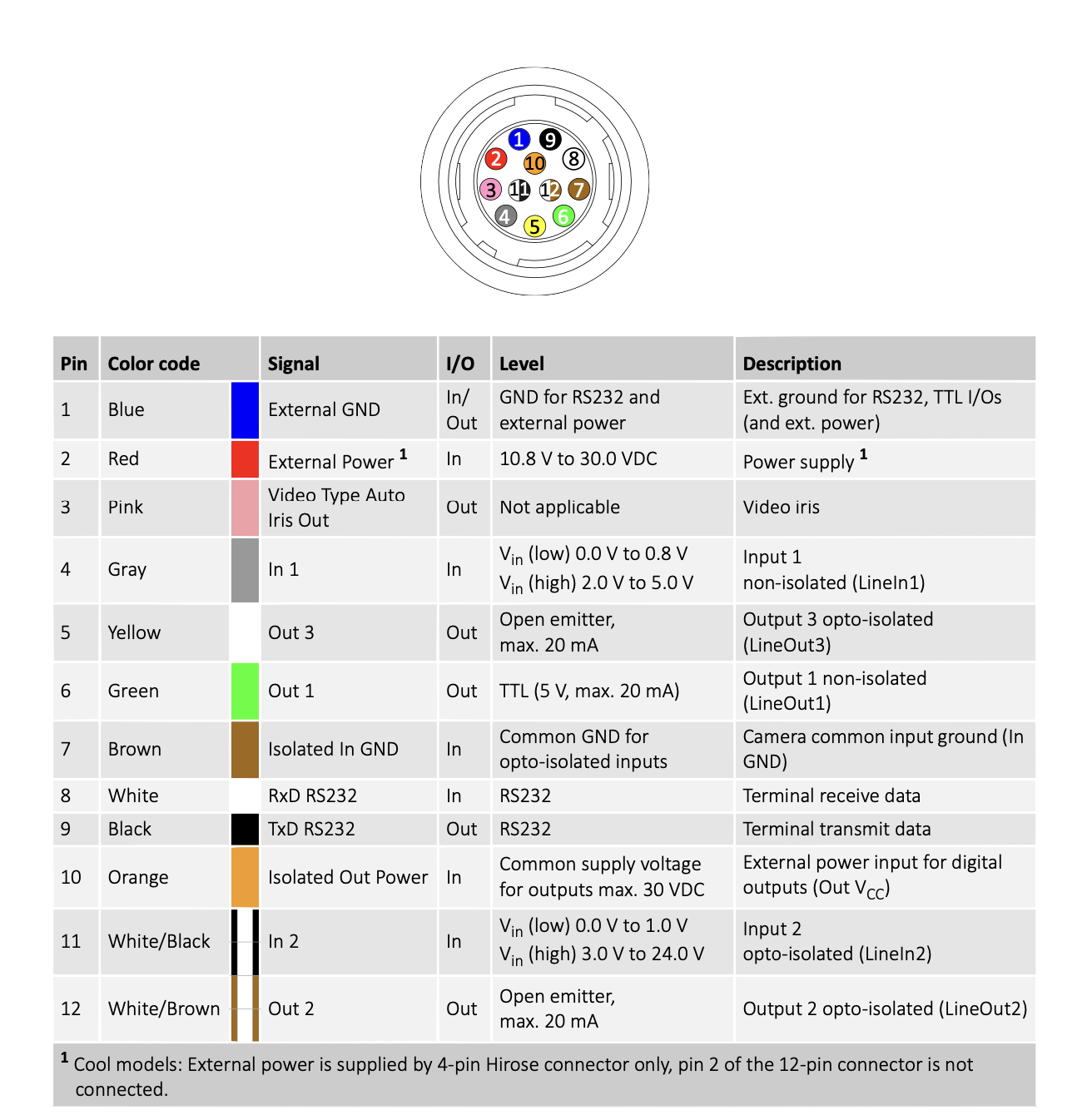
Input signals
Input signals allow the camera to be synchronized to an external event. The camera can be programmed to trigger on the rising edge, falling edge, both edges, or level of the signal. The camera can also be programmed to capture an image at some programmable delay time after the trigger event.
- In 1 – non-isolated (pin 4)
In 1 is not electrically isolated and can be used when environmental noise is inconsequential, and a faster trigger response is required. To complete the trigger circuit, connect trigger ground to External GND.

- In 2 – opto-isolated (pin 11)
In 2 is optically isolated and can be used in electrically noisy environments to prevent false trigger events. To 1 complete the trigger circuit, connect trigger ground to Isolated In GND. Compared to the non-isolated trigger, 3 In 2 has a longer propagation time.

VIMBA SDK (includes VIMBA Viewer)
Vimba 6.0 was tested with:
Vimba for Windows 64-bit:
Windows 10 (GigE, USB, 1394, and Camera Link cameras)
Windows 11 (GigE, USB, and 1394 cameras)
Vimba for Windows 32-bit:
Windows 10 (GigE, USB, 1394, and Camera Link cameras)
- Vimba for Linux: Ubuntu 20.04 LTS (64-bit), Debian 11.2 (64-bit)
- Vimba for ARM64: NVIDIA Xavier NX with
- JetPack 4.6 (L4T 32.6.1) – GigE and USB cameras
- JetPack 4.5.1 (L4T 32.5.1) – CSI-2 cameras
In most cases, Vimba is also compatible to higher versions or other Linux distributions (except for CSI-2).

